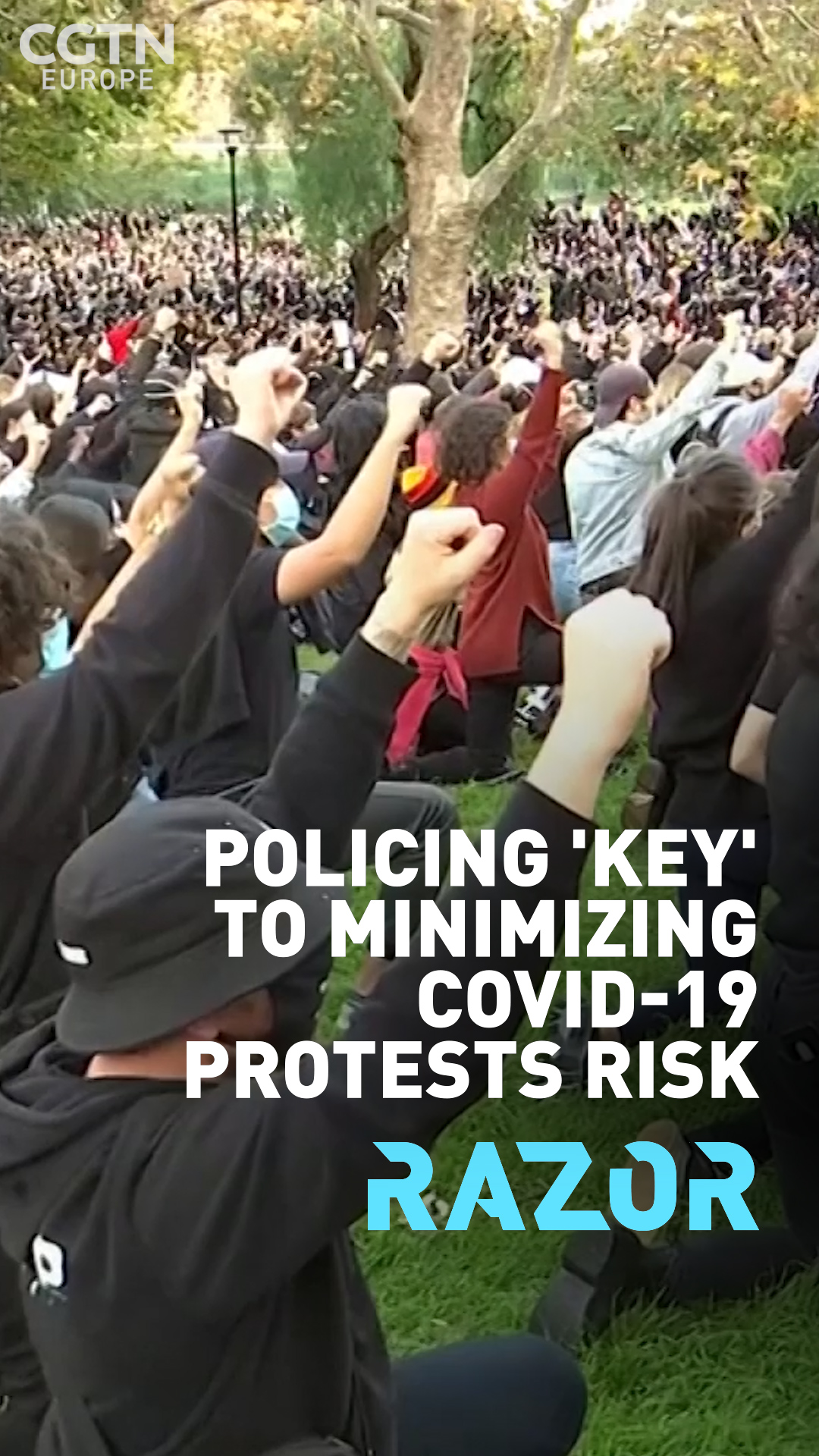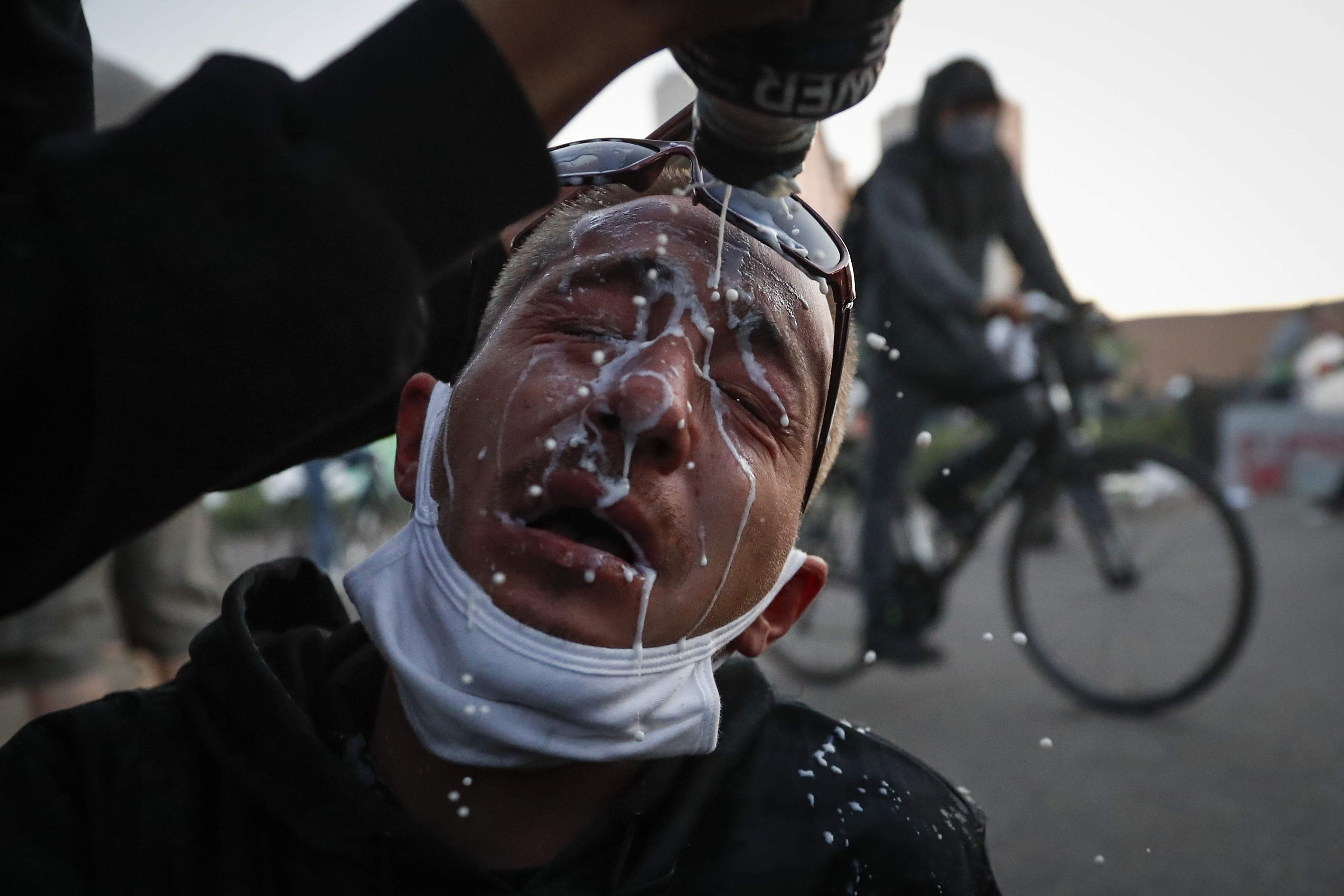02:30

Since the killing of George Floyd on 25 May, thousands of people in the U.S. and across the world have joined protests against police brutality and systemic racism.
This period of unprecedented unrest, arising at a time when the coronavirus pandemic is still an emergency with no real end in sight, has had many expressing concerns over the risk that the protests might turn into hotspots for the virus.
A recent study found that 43 percent of people infected with the coronavirus could be asymptomatic carriers, which means they are infected but show no symptoms at all and could still pass it on. The findings suggest the large gatherings of Black Lives Matter protesters could potentially be very risky.
With protesters often getting pepper-sprayed or tear-gassed by police, "kettled" and arrested in confined spaces, public health experts are worried the threat of infection among protesters might be worsened by such crowd-control police tactics.
"Tear gas causes you to have tears running down your face, snot coming out of your nose, saliva production in your mouth, coughing, spluttering and sneezing," explains epidemiologist Emma Hodcroft. "Deploying these irritants is almost certainly increasing your risk of transmission."

A protester is assisted with a solution to help neutralize the effects of tear gas in Minneapolis, U.S. /AP/John Minchillo
A protester is assisted with a solution to help neutralize the effects of tear gas in Minneapolis, U.S. /AP/John Minchillo
Though the protests normally take place outside, where the risk of spreading the infection is reduced by the fact that any particles coming from nose or mouth will quickly dissipate into the atmosphere, aggressive policing makes protesters more susceptible to the virus.
"When we arrest people and crowd them into cop cars and put them into jail cells in close quarters, especially if they've been targeted by tear gas beforehand – this is similarly not helping the situation," says Hodcroft.
"When police intervene in these protests and use force to crowd people together into small streets or to split crowds up and force them down smaller alleys, this makes it much harder for people to adhere to the two-meter guidelines."
Protesters have been encouraged to reduce the risk of infection by wearing a mask and bringing spares for others, keeping their distance, using hand sanitizer and avoiding sharing signs or water bottles.
"Our main focus is just facilitating the safety of any of the protests," explains LEMZI, an associate of London Black Lives Matter. "So when we address our people as they go to these marches and protests, we actually always encourage them – it's not always followed, but we always encourage – to keep some form of social distance ... Once you return home, you shower immediately, wash your clothes immediately. You also self-isolate after you've been to a protest or just among lots of other people."

A demonstrator runs from a cloud of tear gas during a march against police brutality and racism in Paris, France on 13 June. /AP/Thibault Camus
A demonstrator runs from a cloud of tear gas during a march against police brutality and racism in Paris, France on 13 June. /AP/Thibault Camus
Hodcroft also suggests using a drum or a rattle to make noise instead of chanting, and avoiding the middle of the crowd. "It's usually the most interesting part, but it's also the most crowded part. If you can keep spread out, keep to the edges, you'll help make sure that everyone has plenty of room."
In the weeks during which the Black Lives Matter protests have been conducted, Minneapolis (where George Floyd died) committed to dismantle its police department, New York City promised reforms to its police force, confederate statues were toppled down across the U.S., statues of slave traders have been removed in the UK and statues of infamous King Leopold II have been cleared out across Belgium.
These are important achievements, but protests are likely to continue in the coming weeks demanding more concrete changes.
"Today, there's enough evidence to display how we've been displaced and put into environments that are meant to socially condition us to be at the bottom and to be at the front line of receiving anything, whether it's viral, bacterial, economic, or social," says LEMZI.
"And we take those ramifications before anybody else. So now, whilst everything is coming together quite easily and at the same time, whether it's natural or whether is economic ... this is the response that has garnered people feeling like this is way too much."
Hodcroft thinks the protest could lead to an increase in COVID-19 cases, but so could the easing of lockdown measures taking place in the U.S. and across the world.
"One thing that will help us control cases, whether they're due to protests, reopening, or just people generally getting a little bit fed up with lockdown, is if we can scale up and ensure that we're still scaling up to test, trace and isolate, then we'll be able to control any increase in case counts, no matter the cause."